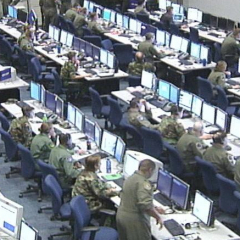-
Posts
5 -
Joined
-
Last visited
-
Feedback
0%
Content Type
Forums
Store
Third Party - Providers Directory
Feature Plan
Release Notes
Docs
Events
Posts posted by 4XCIRCO
-
-
TBH, the old metin2 look gave me the best immersion into an asian fantasy world. I would love to see more weapons and armor of such kind.

-
Hey Com.
I am just an old dude from the 2008 era that somehow got into computer stuff because he always sit for hours playing metin2. Well lets specifiy, cheating, exploiting and hacking in my favourite games got me into IT.

Its amazing to see that there is still some action in the metin2 community.

-
 3
3
-
 1
1
-
-
An ambitious project and once finished a perfect base for highly costumized metin2 servers.
GameForge is a german company, thus I assume they would take legal actions against any unprohibited distribution of their product in front of a german court.
What I would like to mention is a part out of the Act on Copyright and Related Right (Urheberrechtsgesetz – UrhG).
https://www.gesetze-im-internet.de/englisch_urhg/englisch_urhg.html#p0018
As far as I understand, the final product of the above metioned project would be a copy of the game metin2. In our case, we cannot (even) bring to proof that we own a licence or any other evidence in which a right to reproduce, alter or copy the original game is metioned. Rewriting the code base would only make all participans to authors of their code base, but put together with GameForges assets we would have an altered product. Altered on the code side.
-----
Section 3
AdaptationsTranslations and other adaptations of a work which are the adapter’s own intellectual creations are protected as independent works without prejudice to the copyright in the adapted work. The insubstantial adaptation of an unprotected musical work is not protected as an independent work.
-------
Section 7
AuthorThe author is the creator of the work.
------
Section 25
Access to copies of works(1) The author may require that the owner of the original or of a copy of his work make the original or copy thereof available to him insofar as this is necessary for the production of copies or adaptations of the work and does not conflict with the legitimate interests of the owner.
(2) The owner shall not be obliged to surrender the original or the copy to the author.
---
Section 69f
Infringement of rights(1) The rightholder may require of the owner or proprietor that all unlawfully produced or distributed copies or all copies intended for unlawful distribution be destroyed. Section 98 (3) and (4) shall apply accordingly.
(2) Subsection (1) shall apply accordingly to means the sole purpose of which is to facilitate the unauthorised removal or circumvention of any technical device which may have been applied to protect the computer program.
----
Section 96
Prohibition of exploitation(1) Illegally produced copies may neither be distributed nor used for the purposes of communication to the public.
------
Section 97
Right to require cessation of infringement and to damages(1) Any person who infringes copyright or any other right protected under this Act may be required by the injured party to eliminate the infringement or, where there is a risk of repeated infringement, may be required by the injured party to cease and desist. Entitlement to prohibit the infringer from future infringement shall also exist where the risk of infringement exists for the first time.
(2) Any person who intentionally or negligently performs such an act shall be obliged to pay the injured party damages for the prejudice suffered as a result of the infringement. When setting the damages any profit obtained by the infringer as a result of the infringement of the right may also be taken into account. Entitlement to damages may also be assessed on the basis of the amount the infringer would have had to pay in equitable remuneration if the infringer had requested authorisation to use the right infringed. Authors, writers of scientific editions (section 70), photographers (section 72) and performers (section 73) may also demand monetary compensation for damage which is non-pecuniary in nature provided and to the extent that this is equitable.
P.S: I am not a lawyer
-
 1
1
-
-
On 6/10/2021 at 12:07 AM, Ace628 said:
i cant connect with navicat.. i dont know what i do wrong i use the ip from the virtualbox and the id: root und
passwort: dev
Start your FreeBSD vm and connect via PuTTY. Then connect to your mysql server as root user with the password option.
-
 19
19
-
 3
3
-
 2
2
-
 1
1
-
 2
2
-
 1
1
-
 1
1
-
 7
7
-
 3
3
-
 13
13
-






A security checklist for your Metin2 server
in Guides & HowTo
Posted
Top notch. Love to see security being openly mentioned and shared with the community!